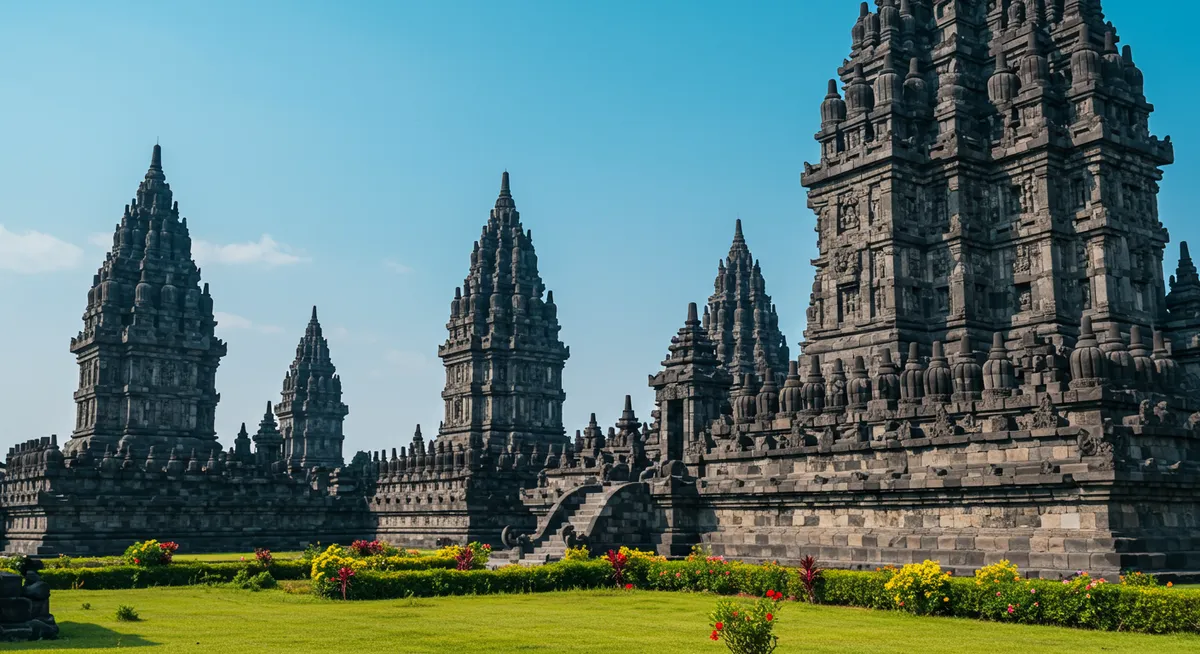
Prambanan Temple Guide: History & Visiting Tips
Table of Contents
Want to find the best travel deals for this destination? Chat with our travel hacking specialist!
Get Travel HacksCategory: prambanan-temple-complex-guide-history-visiting-tips
Prambanan Temple Complex Guide: History & Visiting Tips
Having explored the magnificent site myself, I can confidently say that the Prambanan temple complex in Yogyakarta, Indonesia, is an absolute must-see. This UNESCO World Heritage site is not merely a collection of ancient stones; it's a testament to Indonesia's rich Hindu cultural heritage and architectural prowess. This comprehensive Prambanan temple complex guide delves into its fascinating history and provides essential visiting tips to help you make the most of your journey. Prepare to be awed by the towering spires and intricate carvings that tell tales of gods and legends, offering a truly immersive experience in Javanese history.
Unraveling Prambanan's Rich History & Significance
The Prambanan temple complex, built in the 9th century, stands as Indonesia's largest Hindu temple site, dedicated to the Trimurti: Brahma, Vishnu, and Shiva. Its construction signifies a pivotal period of Hindu revival in ancient Java, reflecting the powerful Sanjaya Dynasty's influence. I remember feeling a profound connection to history walking through these ancient grounds; the sheer scale is breathtaking. The central Shiva temple, towering at 47 meters, is particularly impressive. The complex's design brilliantly symbolizes the cosmic mountain Meru, a sacred Hindu belief. Exploring its intricate carvings and architectural brilliance offers a deep insight into Java's classical period, truly enriching any visit to this iconic Prambanan temple complex guide highlight.
Architectural Wonders: Main Temples & Reliefs
At the heart of the Prambanan temple complex are the three main temples dedicated to Shiva Mahadeva, Vishnu, and Brahma, flanked by smaller shrines for their animal vehicles. The Shiva temple, known for its exquisite reliefs depicting the Ramayana epic, is particularly captivating. These detailed carvings aren't just decorative; they narrate ancient stories, offering a visual feast for visitors. My tip is to take your time examining these panels; they reveal so much about ancient Javanese artistry. Beyond the main shrines, hundreds of smaller perwara temples surround the core, though many are still in ruins. This hierarchical layout further emphasizes the religious and architectural sophistication of the Prambanan temple complex.
Essential Visiting Tips for Your Prambanan Journey
Planning your visit to the Prambanan temple complex effectively ensures a memorable experience. Firstly, for the best time to visit Yogyakarta and Prambanan, aim for the dry season (May to September) to avoid heavy rains. Arrive early, ideally right at opening (6:00 AM), to beat the crowds and the midday heat – a lesson I learned firsthand! Wear comfortable shoes suitable for walking and explore the expansive grounds. Don't forget sun protection and plenty of water. Tickets are readily available at the entrance, and you can opt for a combined ticket with Borobudur if visiting both. This comprehensive guide helps you prepare for one of the top things to do in Yogyakarta.
Getting to Prambanan & Nearby Attractions
Reaching the Prambanan temple complex from Yogyakarta is straightforward, with various transport options available. Taxis, ride-sharing apps, and local TransJogja buses (Line 1A, direct route) are all viable choices. The journey typically takes around 45 minutes to an hour, depending on traffic. I found the TransJogja bus surprisingly efficient and budget-friendly. While at Prambanan, consider visiting nearby temples like Candi Sewu, located within the same complex, offering a glimpse into Mahayana Buddhism. For a more comprehensive exploration of the region, integrate Prambanan into your Yogyakarta itinerary 3 days to truly appreciate the area's rich cultural tapestry. This makes it an integral part of any Yogyakarta travel guide.
Frequently Asked Questions
What is the best time of day to visit Prambanan?
How long should I allocate for visiting Prambanan?
Is there a dress code for visiting Prambanan?
The Prambanan temple complex is an awe-inspiring journey through Indonesia's rich history and architectural brilliance. By understanding its profound significance and utilizing these practical visiting tips, you're set for an unforgettable experience. From its towering spires to its intricate reliefs, every corner of Prambanan tells a story. Don't miss this essential stop on your Indonesian adventure. Ready to explore this magnificent UNESCO World Heritage site? Plan your trip to Yogyakarta and immerse yourself in the magic of Prambanan.